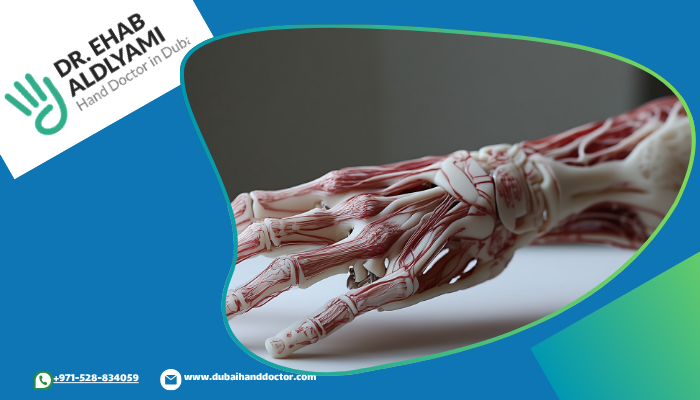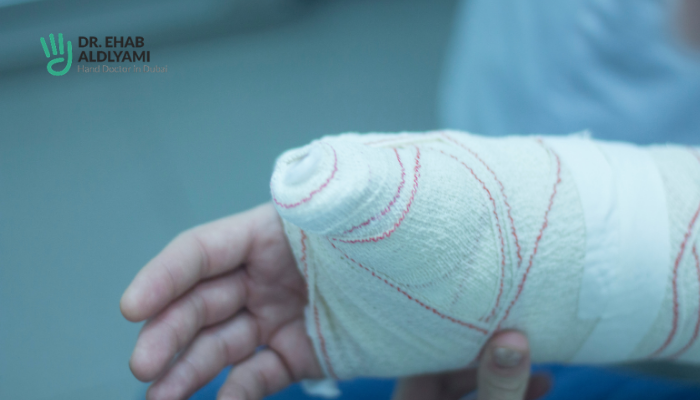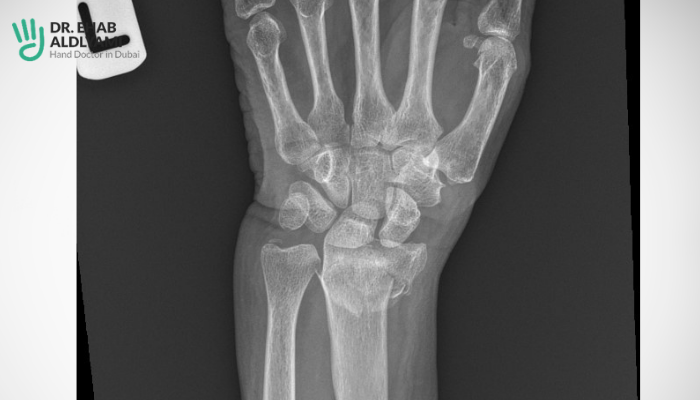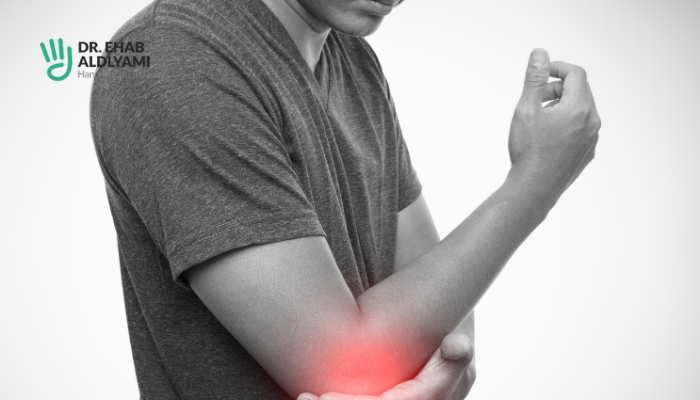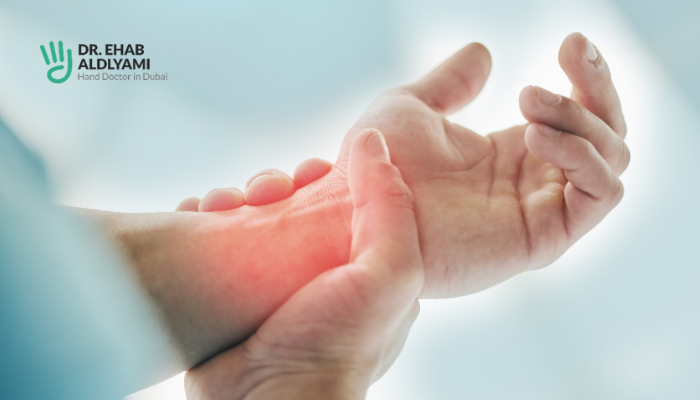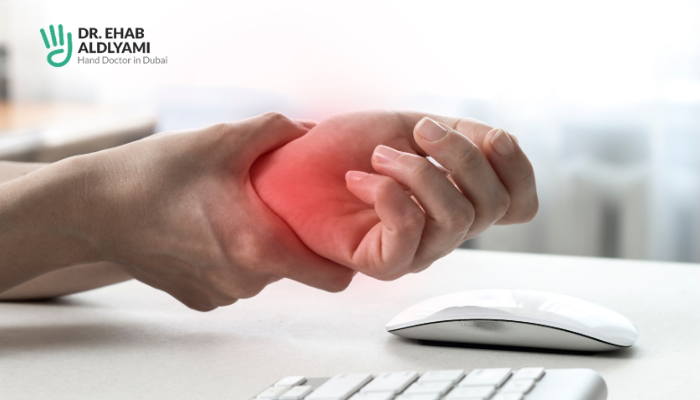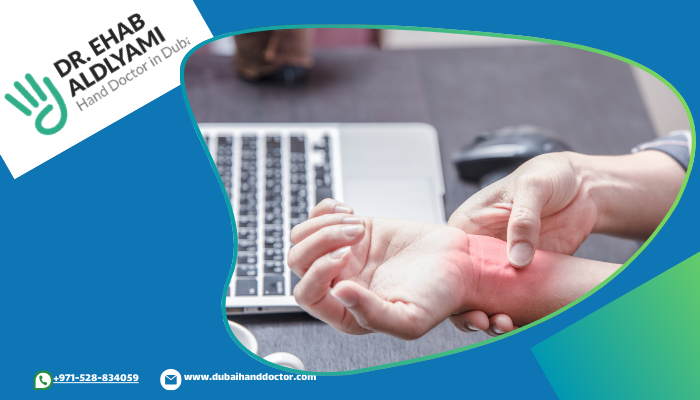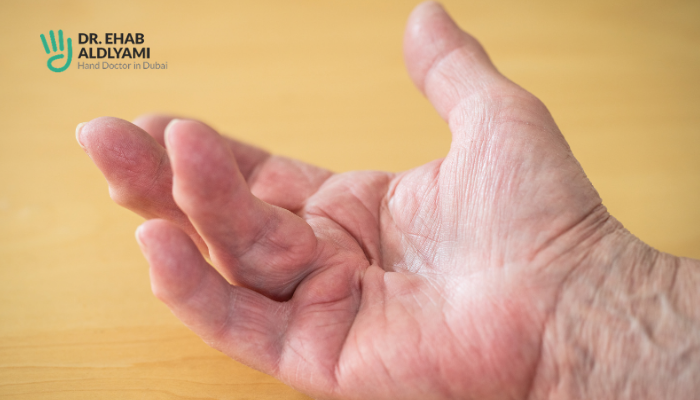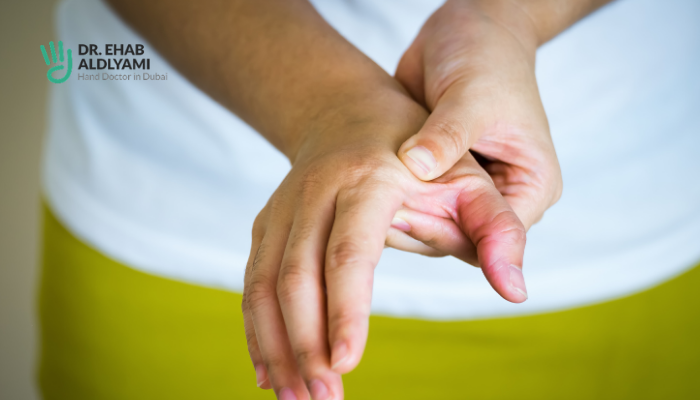What is the most common peripheral nerve injury?
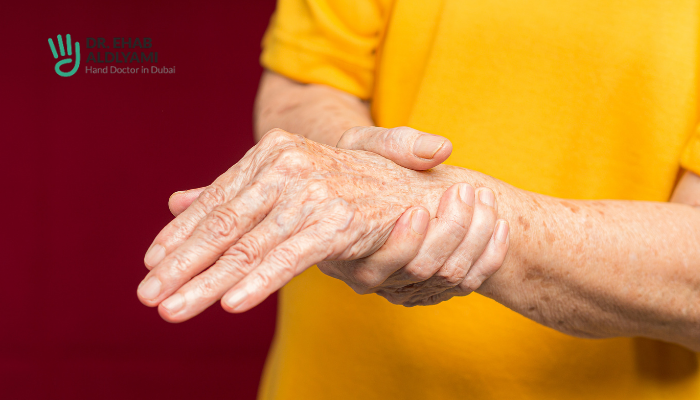
Peripheral nerve injuries are prevalent and can be quite debilitating, affecting many people each year. These injuries can happen due to sports, accidents, or repetitive movements, and they can range from mild to severe, impacting daily activities and overall well-being.
In this blog, we’ll explore the most common peripheral nerve injury, looking at its causes, symptoms, and the best ways to treat and recover.
What is a peripheral nerve injury?
A peripheral nerve injury occurs when damage affects the nerves extending from the spinal cord and brain to the body outside the central nervous system.
These peripheral nerves transmit signals between the central nervous system and the rest of the body, regulating sensations, movements, and motor coordination.
There are 3 types of nerve injury based on different factors, such as the mechanism of injury and location:
- Carpal tunnel syndrome
- Cubital tunnel syndrome
- Radial tunnel syndrome
Carpal tunnel syndrome is the most prevalent type of peripheral nerve injury.
What is carpal tunnel syndrome?
Carpal tunnel syndrome (CTS) is a common condition characterized by numbness, weakness, and pain in the hand and wrist.
The condition happens when the median nerve is squeezed or compressed during its passage through the wrist. The hand may feel swollen and ineffective, often prompting a need to shake it out upon waking.
What are the carpal tunnel syndrome causes?
Carpal tunnel syndrome can be damaged can be caused by a combination of factors:
- Heredity
- Repetitive hand use
- Hormonal imbalance
- Pregnancy
- Injury resulting from an accident, a fall, or sports can stretch, compress, crush, or cut nerves.
- Autoimmune diseases, like lupus and rheumatoid arthritis.
- Medical conditions, such as diabetes and Guillain-Barre syndrome, can damage nerves.
Gender also plays a role, with women being three times more likely to develop this condition.
What are the carpal tunnel syndrome symptoms?
- Numbness, tingling, and pain in the hand and wrist
- Occasional shock-like sensations that extend to the thumb and index, middle, and ring fingers
- Muscle weakness and clumsiness in the hand
- Reduced hand strength
How is carpal tunnel syndrome diagnosed?
To diagnose carpal tunnel syndrome, Dr Ehab will review your medical history, carefully examine your hand and wrist, and perform several physical tests.
- Wrist Tests: The Tinel and Phalen tests elicit symptoms that confirm carpal tunnel syndrome.
- Laboratory Tests and X-rays: These reveal underlying conditions and nerve-damaging diseases.
- Electrodiagnostic Tests: Nerve conduction and electromyography tests measure how well your median nerve works and help determine whether there is too much pressure on the nerve.
- Ultrasound: An ultrasound utilises high-frequency sound waves to produce detailed pictures of bone and tissue.
What are the different carpal tunnel syndrome treatment options?
Some of the most common treatments for nerve damage include:
- Splinting: Wearing a splint at night to keep the wrist straight can help relieve symptoms.
- Activity Modification: Avoid tasks that trigger symptoms, with frequent breaks and cold packs for swelling.
- Medications: Over-the-counter or prescription medications like ibuprofen or naproxen to reduce inflammation and relieve pain.
- Corticosteroid Injections: Directly injecting corticosteroids into the carpal tunnel can reduce inflammation and alleviate symptoms.
- Exercise: Engaging in recommended hand exercises can strengthen the muscles supporting the wrist, improve the range of motion, and alleviate pressure on the median nerve.
- Surgery: If nonsurgical treatments fail to provide lasting relief, Dr Ehab may recommend surgery. It relieves pressure on the median curve by cutting the transverse carpal ligament.
Contact Dr Ehab Bassim Aldlyami for Peripheral Nerve Syndrome Treatment in Dubai
When it comes to addressing peripheral nerve syndrome and ensuring the utmost care for your hand and wrist, there’s a name you can trust: Dr Ehab Bassim Aldlyami.
As a Consultant Trauma and Orthopaedic Surgeon specializing in Hand and Wrist, Dr Ehab specialises exclusively in treating hand and wrist conditions. With a wealth of experience and a dedicated focus, he stands out as the ideal choice for your peripheral nerve syndrome treatment.
Book your consultation today and take the first step towards lasting relief.
FAQ
The leading cause of peripheral nerve injuries is trauma, including accidents, falls, and sports injuries.
Carpal tunnel syndrome is the most frequently nerve injury, characterized by wrist compression of the median nerve.
The median nerve is the most common type of peripheral nerve. It runs from the forearm into the hand and is frequently involved in conditions like carpal tunnel syndrome.
The three types of peripheral nerve injuries are carpal, cubital, and radial tunnel syndrome.
Peripheral nerve injury classification is done from mild to severe forms of injury.

Related Post
Contact Us
What is the most common peripheral nerve injury?

What is Carpal Tunnel Syndrome?
A common hand condition, carpal tunnel syndrome, is caused by pressure on one of the primary nerves in the hand, called the median nerve.
This compression can cause pain, tingling, numbness, and weakness in the hand and fingers.
It often arises from repetitive motions or prolonged wrist positioning in certain ways. It is common among people who use computers, do assembly line work, or engage in activities that strain the wrist.
Carpal Tunnel Syndrome Symptoms
Carpal Tunnel Syndrome can cause various symptoms that primarily affect the hand and wrist. Common carpal tunnel syndrome symptoms include:
- Numbness, tingling, burning, and pain, primarily in the thumb, index, middle, and ring fingers.
- Occasional shock-like sensations radiating to the thumb, index, middle, and ring fingers.
- Pain or tingling sensation that may travel up the forearm toward the shoulder.
- Weakness in the hand and drop objects.
If you are experiencing any of these symptoms, it’s advisable to seek medical attention.
Carpal Tunnel Syndrome Diagnosis
There are several tests that healthcare professionals use to diagnose carpal tunnel syndrome or to assess the likelihood of its presence.
Here are some common carpal tunnel syndrome tests that may be used:
Medical history, in which your doctor will review the pattern of your symptoms.
Physical examination, which includes testing the feeling in the fingers and the strength of the muscles in the hand
Imaging tests such as ultrasound or X-ray
Nerve conduction study in which a small shock is passed along the median nerve to see if the median nerve is functioning properly.
Electromyography measures the electrical activity of muscles.
If you are experiencing any of the symptoms of carpal tunnel syndrome, seeking medical attention is recommended. Early diagnosis and timely treatment can help manage the condition effectively.
Carpal Tunnel Syndrome Treatments
The carpal tunnel syndrome treatment aims to alleviate symptoms, reduce inflammation, and relieve pressure on the median nerve within the carpal tunnel. The appropriate treatment plan can vary based on the severity of the condition and individual factors.
Here are some common carpel tunnel syndrome treatments:
Nonsurgical Treatment
1. Wrist Splinting
Wearing a splint on the wrist at night when you sleep can help keep the wrist still and reduce pressure on the median nerve. It can also help prevent daytime symptoms
2. Medications
Medications like painkillers and NSAIDs may help relieve pain in the short term.
3. Steroid Injection
This can be effective in cases where a wrist splint has not helped. Your doctor may inject the carpal tunnel with local anaesthetic and steroids. In more significant cases, steroid injections only help temporarily.
4. Activity Changes
If your job or activities aggravate your symptoms, modifying them can help slow or stop the progression of the disease. For example, take frequent breaks from repetitive activities involving the use of the hands.
a. Exercises
Some carpal tunnel syndrome exercises can help improve your wrist and hand’s flexibility, strength, and mobility. Some of these are.
b. Wrist Rotations
Slowly move your wrist in circular motions, both clockwise and counterclockwise. Repeat up to four times.
c. Thumb Stretch
Using your opposite hand, push your thumb backwards until you feel a gentle stretch. Repeat up to four times.
e. Prayer Stretch
Put your hands together under your chin in a prayer position. Push your hands down to your waist until you feel a moderate stretch. Hold for up to 30 seconds. Repeat four times.
Surgery:
Surgical procedures may be appropriate if symptoms are severe and don’t respond to other treatments.
Carpal Tunnel Decompression (CTD)
CTD is a day surgical procedure in which your surgeon makes an incision in the palm to release the nerve. The wound is then closed with sutures, and a bulky dressing is applied.
Consult for Dr Ehab Bassim Aldlyami- a Skilled Hand Surgeon
Dr Ehab Bassim Aldlyami is a dedicated head surgeon in Dubai passionate about healing hands and wrists.
Dr Ehab’s clinical expertise spans a broad spectrum, addressing conditions like Carpal Tunnel Syndrome. Whether it’s nerve repair or managing carpal injuries and disorders, his goal is to restore function and alleviate pain in your hand and wrist.






